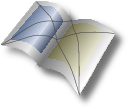Hauptmenü
Sie sind hier
TDS Achive for Installation in a Local TEXMF Tree

Deutsch: → TDS-Archive zur Installation in einem lokalen oder privaten TEXMF-Baum
All TeX distributions provide features to install TeX files in a local or a private TEXMF tree that will be scanned before the distribution's tree. TeX Live provides support for at least one additional, system-wide TEXMF tree. The root directory of this local tree can be found using »kpsewhich -var-value=TEXMFLOCAL«. It also provides support for a personal TEXMF tree. The root of the personal TEXMF tree can be found using »kpsewhich -var-value=TEXMFHOME«. MiKTeX provides in »MiKTeX Settings« the facility to add and remove as many TEXMF roots as you want.
If you would say: »It's all double Dutch to me.« now, this would not be the right way to install one of my packages. Please try another solution.
It can be very time consuming to put all files of a package into the correct subdirectory of a TEXMF root! To reduce this effort, I provide archives with a ready to use directory structure below the TEXMF root. Therefore you only need to download a TDS archive and extract it in a TEXMF root directory. If you use MiKTeX, you have to add the newly extracted TEXMF root to the registered TEXMF roots and to refresh the Filename Database. When using TeX Live refreshing of the ls-R database is not needed for TEXMFLOCAL or TEXMFHOME by default.
Extraction of a TDS archive must reproduce all subdirectories stored in the archive but must not create additional subdirectories. Some graphical frontends to ZIP extract to a subdirectory named with the base name of the archive by default. Please avoid this!
Please note that the update manager of your distribution will not update such a manual installed package. So you have to remove the manual installed package, if the updated distribution package has to be used. To do so, remove the manual installed package's subdirectories. MiKTeX users also have to refresh the Filename Database again.
You can find all available packages on my TDS repository page. A greater revision number means a newer package. Official KOMA-Script releases have a version number with two number sections, e.g., v3.20. Unofficial pre- or post-releases repeat the revision number as third number section, e.g., v3.20.2458. There is also a MD5 checksum. So you can test the integrity of the archive before installation.
As you can see, the TDS repository provides an easy approach to test an unofficial pre- or post-release of KOMA-Script or even to roll-back to an old release.

